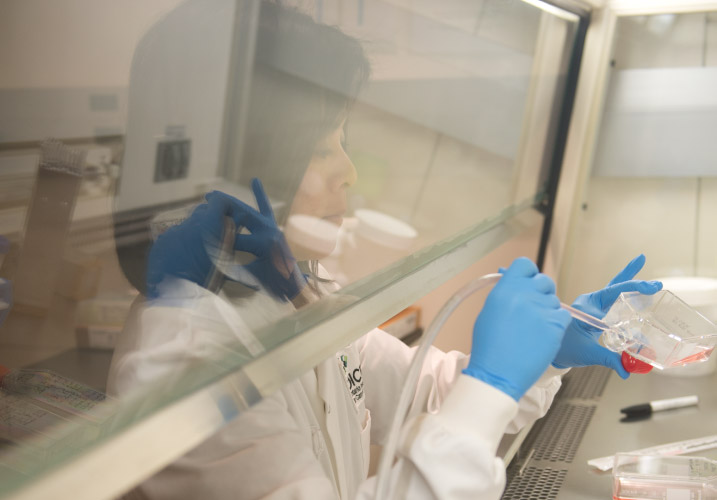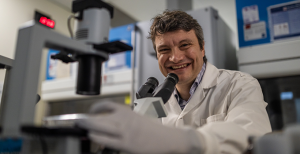
Director, Clinical Translation
Teresa Petrocelli, M.Sc., PhD
teresa.petrocelli@oicr.on.ca
OICR created the Clinical Translation Pathway (CTP) to accelerate translational cancer research so that precise, impactful and cost-effective treatments can benefit cancer patients.
What we do
The Clinical Translation Pathway (CTP) supports innovative cancer research that aims to turn scientific discoveries into tools to find cancer earlier and treat it more effectively.
Why we do it
New findings in the lab don’t easily become new practices in the clinic. There are many challenges in turning scientific discoveries into tools and treatments that benefit patients. OICR created CTP to help overcome these challenges and deliver impactful and cost-effective cancer solutions to patients who need them.
How we do it
CTP supports a wide range of cancer innovative research, including innovations from OICR-supported research as well as projects from across Ontario. The program focuses on projects with a clear path to impact, helping research findings be adopted into practice. By encouraging the collaboration between researchers, patients, and caregivers, the CTP embodies the principles of equality, diversity, and inclusion (EDI).
Funding Streams
- Pre-Clinical Acceleration Team Awards (Pre-CATA): Supports pre-clinical projects, which are early stage studies before innovations are tested with humans, with a focus on the discovery of biomarkers, diagnostics and therapeutics.
- Clinical Acceleration Team Awards (CATA): Supports early phase (I-II) clinical trials for the validation of biomarkers, diagnostics and therapeutics in humans.

Madhuri Koti – Queen’s University

Neil Fleshner – University Health Network

David Uehling – Ontario Institute for Cancer Research

Richard Kim – Lawson Health Research Institute

Gelareh Zadeh, University Health Network

Geoffrey Wood, University of Guelph

Karen Mossman, McMaster University

Kun Ping Lu, The University of Western Ontario

Glenn Bauman – Lawson Health Research Institute

Jane Bayani – Ontario Institute for Cancer Research

Tobias Berg – McMaster University

Scott Bratman – University Health Network

Scott Bratman – University Health Network

David Cescon – University Health Network

Eric Chen – University Health Network

John Dick – University Health Network

Marc de Perrot – University Health Network

Richard Kim – Lawson Health Research Institute

Natasha Leighl – University Health Network

Stephanie Lheureux – University Health Network

Mitchell Sabloff – The Ottawa Hospital

Martin Yaffe – Sunnybrook Research Institute

Gang Zheng – University Health Network














